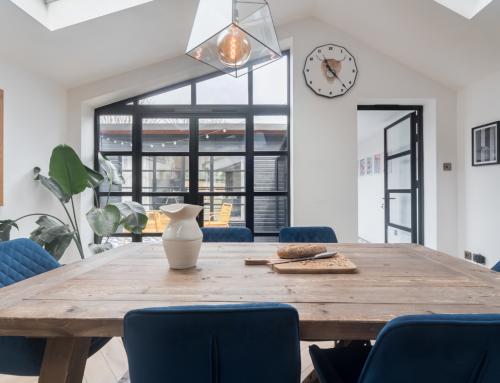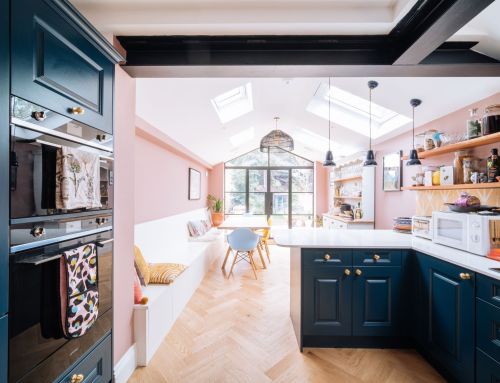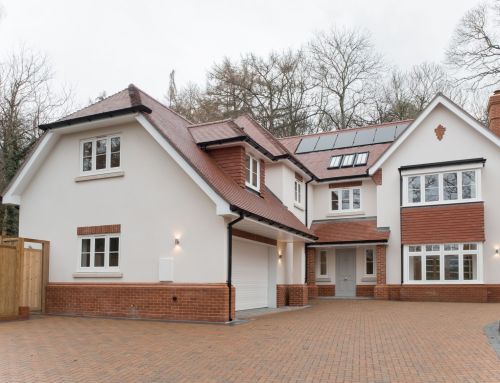Like any industry there is no fixed path you have to take to becoming an Architectural Designer sometimes it comes down to what is right for you and in other cases it can just be a big dose of good luck.
If you want to become an Architect then you will have to get a degree and spend many years building up your knowledge and case studies to become chartered. Not being a chartered architect certainly hasn’t held me back in my career but maybe limited the choices I had in terms of job roles.
Where did it all start
It started for me at college, I studied A level design technology and an advanced GNVQ in manufacturing, this is also where I learnt to use Autocad. I picked Autocad up really quickly and look back wishing products like Revit and SketchUp were available back then so I could have spent time learning this in an education setting rather than in the work place so I could have spent more time studying them.
On completing my college courses, I wasn’t clear on what path I wanted to take with my education so decided to go out into the working world and try and out my new Autocad https://en.wikipedia.org/wiki/AutoCAD skills. I spent a day trawling through the yellow pages (I know I’m showing my age here) and made a list of companies that I thought may use my skills with cad software.
I had a response from a house builder in Weybridge called Persimmon Homes. I worked in the technical department for 18 months learning about standard house types, details, site surveys, commercial buildings and feasibility studies.
It was here I finally thought that I had found an industry I wanted to progress in. I moved on from Persimmon as I wanted to go back to college and further my education but also find a new role to test myself further.
I joined Wentworth Homes as a Junior Designer where I was responsible for the working drawing packages. I also enrolled on an HNC at Guildford College, I took a course for two years in Construction and the Build environment.
I’m not going to lie it was tough trying to balance study and a full-time job, but I had the support of my family and my colleagues where a great help too. I extended my studies to upgrade my HNC to a HND which took me another year. https://www.nidirect.gov.uk/articles/higher-national-certificates-and-higher-national-diplomas
On completing my course and spending 5 years learning technical drawings I felt like it was time to move on. I joined Banner Homes as an Architectural Assistant working alongside the in-house architect. I began to learn how to design houses and complete feasibility studies for potential sites.
I stayed at Banner Homes for 10 years working on sites ranging from a single dwelling up to 150+. I thoroughly enjoyed my time there and worked alongside some great people who not only taught me a lot about design but also about myself.
Banner homes was bought out by Cala Homes and with this my job roll changed slightly, this was the point where, with Tom, we started exploring whether it could be possible to start a business, using the skills we had both picked up along the way. It was at this point that Fluent Architectural Design Services were born, and we have never looked back.
Should I have gone to University?
It is a question I have asked myself many times. I don’t feel it has held me back stopping my studies at HND level, it certainly meant that I could only apply for certain jobs. I would have struggled trying to get a job in design at a chartered architectural practice.
By not going to university I was able to gain much needed work experience whilst developing my skills and knowledge. If you want to become chartered, then yes go to university and find a placement with a RIBA https://www.architecture.com/ studio. However, don’t feel by not going you will be held back. I am able to design beautiful houses and started my own business all without a degree.
Should I become an Architectural Designer?
It’s not for everybody but I have had a great career working in this industry. I have been fortunate to work alongside some great people, who have taught me so much, yes I’ve had days when I thought was this all worth it, but on the whole I wouldn’t change my career.
Spending hours working out a layout for a property and then going to site when it’s all built is so rewarding. More so now than ever before, as the majority of projects we work on at Fluent Architectural Design Services involve getting a new bedroom into a family home or creating an open plan living space for a young family to enjoy. Knowing that what you have been working on is making a difference for someone is the best feeling ever.
Should I learn Revit or Autocad
I have only really worked with Autodesk products, mainly Autocad but have spent a few years learning Revit https://www.autodesk.co.uk/products/revit/overview. There are many other software packages out there and they all differ slightly but once you have learnt one you will be able to pick up others.
Autocad is an easier to learn and I find it easier to use to design, Revit is great as it allows you design in 3D and easier to see if your design works. Revit is a little more involved and I find it takes a little longer but once it is drawn you save time when making changes. Both are commonly used in the workplace although having looked at job boards there seems to be more opportunities for candidates that can use Revit.
Google SketchUp is another great tool and last time I looked the basic version was still free, Although I think it is now web based. https://www.sketchup.com/
It is simple to use and allows you to model in 3D. I have read some articles that people also use it to draw in 2d and produce technical drawings on.
It’s a great tool to use if you can’t work out how a roof is going to work on a project and you can quickly mass the design up and see how it is going to look. I find it harder to use in terms of making changes to a design, I think you just have to be strict and make lots of components and groups.
Try before you buy
If you are at school and think you would like a career in architecture, I would suggest trying to get some experience in this field Your school probably sends student out on work experience, or try and get a placement at a company over your summer holidays.
Get a feel for it and see if it is something you can see yourself doing. There are many more courses these days than when I was in education, speak to local colleges and see what’s available for you.
Go for it!
As I said before there is no right or wrong way of going about becoming a designer, do your research, download some trials or student versions of the software and have a play, there are some great videos on YouTube and loads of forums if you get stuck.
Good luck!
Nev Millin
Director






